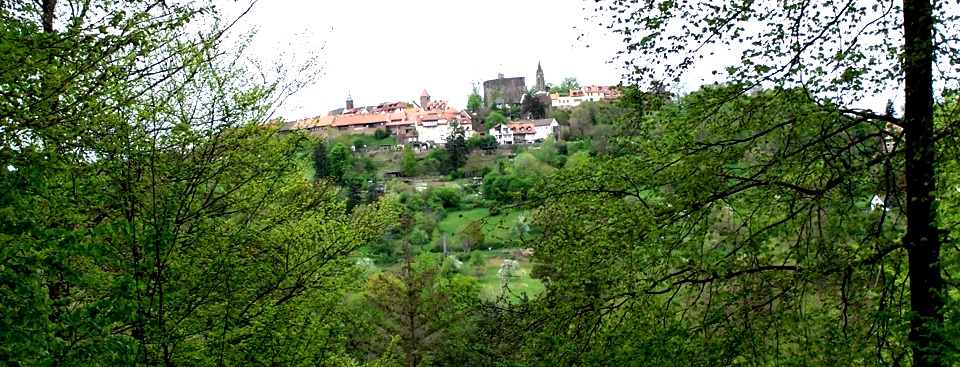
Tilly’s siege of Dilsberg 1622
On the upper Buchwaldweg between Dilsbergerhof and Neckargemünd lies the Tilly Stone. This stone, hewn before 1926, commemorates the unsuccessful siege of Dilsberg in April 1622 during the war between the Protestant Union against the Emperor and the Catholic League that lasted thirty years to 1648.
The supreme commander of the Catholic League until 1632 was a Dutch nobleman: Johann T’Serclaes von Tilly. In spring 1622, he marched with around 12,000 soldiers from Mosbach towards Heidelberg, the centre of Protestantism in the region. His most important tactical objective was to conquer Heidelberg and its castle.
On 4 April 1622, he reached the Electoral Palatinate outpost of Neckargemünd and demanded that the citizens of the town surrender. However, since they did not comply, Tilly had the town stormed on 10 April and within four days all the inhabitants – down to the last child had been massacred. The soldiers received their pay in the form of the right to plunder everything they found.
Parts of the army then focused its attention towards Dilsberg. The commander of the fortress, Bartholomäus Schmid, assured the Palatine Elector that the fortress would ‘defend itself bravely to the last drop of blood’.
Not far from the spot where the stone dedicated to him stands today, Tilly had cannons set up. The approximately 180 soldiers who were stationed there fired on Dilsberg from 14 April 1622. However, they were unable to cause any significant damage to the fortress. On 16 April, Tilly then sent his troops to attack Dilsberg. but their attempts to storm the fortress came to no avail.
Ancient legend tells the tale: According to reports, the people of Dilsberg defended themselves against the attacking soldiers by throwing their beehives over the walls and the swarming bees put the assailants to flight. Since then, part of the castle garden has been known as the “bees garden”. There are however different versions of the legend each dependant on who was to be stung.
When Tilly then learned that a Protestant army was moving north from Bruchsal, he left the region on 19 April 1622 to meet this army. He was defeated in the Battle of Mingolsheim and moved north again with an army reduced to 10,000 men – two thousand of his soldiers had fallen – in order to conquer his main objective of Heidelberg.
His call for more soldiers was answered by the Bishop of Speyer: he sent him his serf peasants, who had to serve Tilly as soldiers. Heidelberg was then bombarded from Neuenheim, the Königstuhl and Gaisberg, so that its garrison under Heinrich van der Meven capitulated on 19 September 1622. Once Heidelberg had fallen, Dilsberg was no longer able to defend itself. The garrison of Dilsberg surrendered the fortress without a fight at the end of September 1622.
Incidentally, no explanation has been found for the date 5 April 1622 noted on the Tillystein.